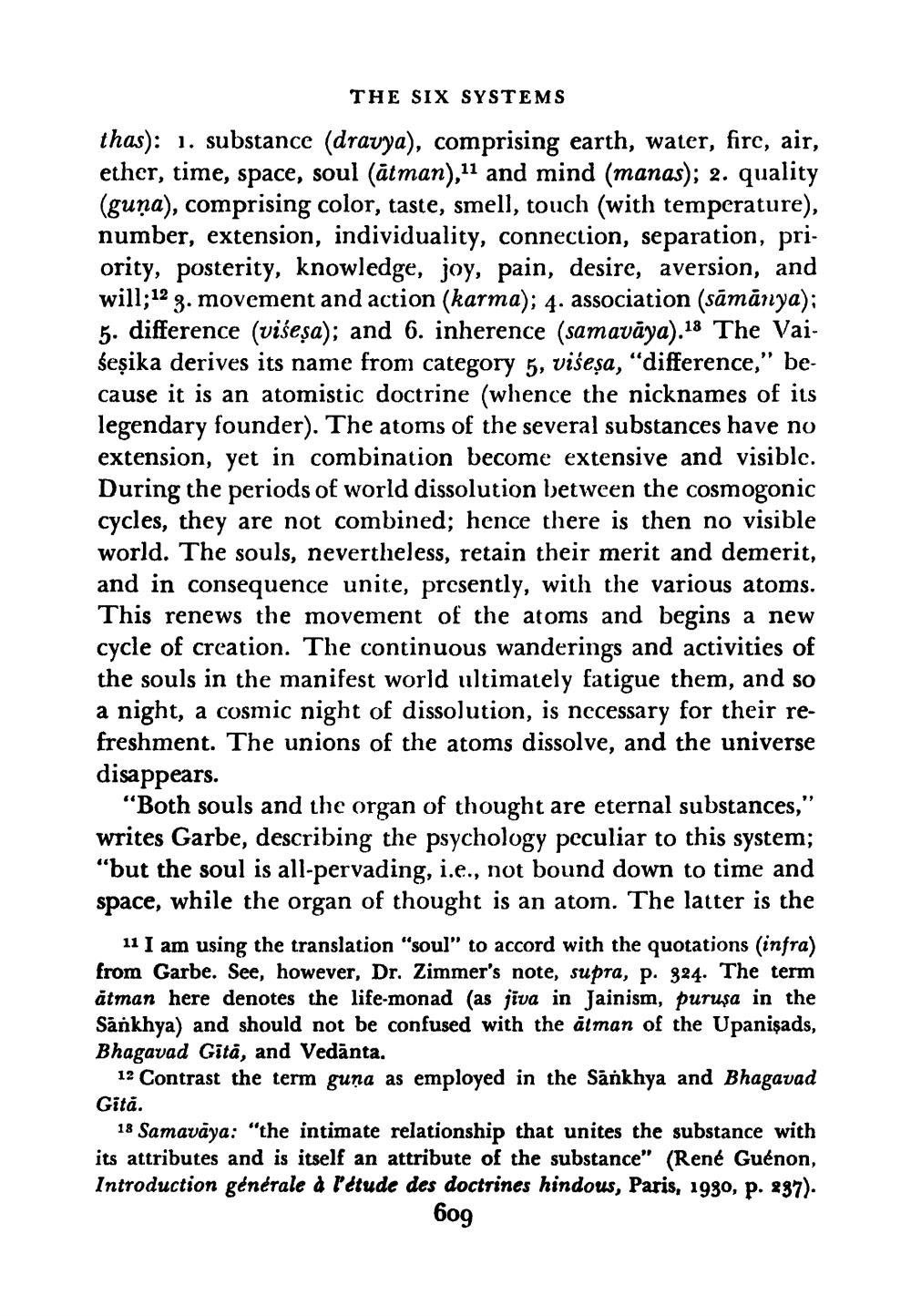________________
THE SIX SYSTEMS
thas): 1. substance (dravya), comprising earth, water, fire, air, ether, time, space, soul (atman),11 and mind (manas); 2. quality (guņa), comprising color, taste, smell, touch (with temperature), number, extension, individuality, connection, separation, priority, posterity, knowledge, joy, pain, desire, aversion, and will;12 3. movement and action (karma); 4. association (sāmánya); 5. difference (višeşa); and 6. inherence (samavāya).18 The Vaiśeșika derives its name from category 5, višeşa, "difference," because it is an atomistic doctrine (whence the nicknames of its legendary founder). The atoms of the several substances have no extension, yet in combination become extensive and visiblc. During the periods of world dissolution between the cosmogonic cycles, they are not combined; hence there is then no visible world. The souls, nevertheless, retain their merit and demerit, and in consequence unite, presently, with the various atoms. This renews the movement of the atoms and begins a new cycle of creation. The continuous wanderings and activities of the souls in the manifest world ultimately fatigue them, and so a night, a cosmic night of dissolution, is necessary for their refreshment. The unions of the atoms dissolve, and the universe disappears.
“Both souls and the organ of thought are eternal substances," writes Garbe, describing the psychology peculiar to this system; "but the soul is all-pervading, i.e., not bound down to time and space, while the organ of thought is an atom. The latter is the
11 I am using the translation "soul" to accord with the quotations (infra) from Garbe. See, however, Dr. Zimmer's note, supra, p. 324. The term atman here denotes the life-monad (as jiva in Jainism, puruşa in the Sankhya) and should not be confused with the atman of the Upanişads, Bhagavad Gità, and Vedānta.
12 Contrast the term guna as employed in the Sankhya and Bhagavad Gită.
18 Samavāya: "the intimate relationship that unites the substance with its attributes and is itself an attribute of the substance" (René Guénon, Introduction générale à l'étude des doctrines hindous, Paris, 1980, p. 297).
609




